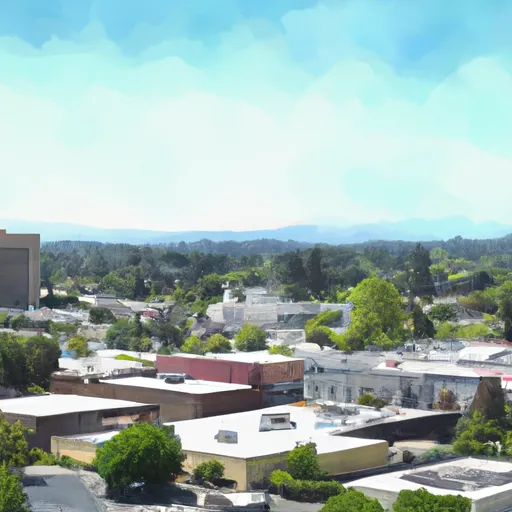-
 Snoflo Premium
Snoflo Premium
Get unlimited access to all our content
With no Ad interruptions! - Start Your Free Trial Login with existing account
Taylorsville
Eden Index
Climate
7.7
•
Recreation
3.9
•
Community
•
Safeguard
4.4/10

Taylorsville, California, is a small town located in Plumas County, nestled in the Sierra Nevada Mountains. The area experiences a Mediterranean climate, with warm, dry summers and cool, wet winters. Summer temperatures average around 80°F (27°C), while winter temperatures range from 30°F (-1°C) to 50°F (10°C). The town receives an average annual precipitation of 40 inches, with the majority falling between November and April.
Taylorsville is surrounded by numerous hydrology constituents, including the Indian Creek, which runs through the town and offers opportunities for fishing and swimming. The Indian Valley Reservoir, located a short drive away, provides additional water-based activities like boating, kayaking, and water skiing.
Outdoor recreation opportunities in Taylorsville are abundant. The surrounding mountains offer hiking and biking trails, allowing visitors to explore the beautiful scenery and enjoy nature. Nearby Plumas National Forest provides opportunities for camping, hunting, and birdwatching. In the winter, the area becomes a haven for snow enthusiasts, with nearby ski resorts offering skiing, snowboarding, and snowshoeing.
Overall, Taylorsville offers a scenic and diverse environment for outdoor enthusiasts, with its pleasant climate, water resources, and various recreational opportunities.
What is the Eden Index?
The Snoflo Eden Index serves as a comprehensive rating system for regions, evaluating their desirability through a holistic assessment of climate health, outdoor recreation opportunities, and natural disaster risk, acknowledging the profound impact of these factors on livability and well-being.
Climate Health Indicator (CHI): 7.7
Taylorsville receives approximately
1037mm of rain per year,
with humidity levels near 84%
and air temperatures averaging around
10°C.
Taylorsville has a plant hardyness factor of
7, meaning
plants and agriculture in this region tend to thrive during the non-winter months.
By considering the ideal temperature range, reliable water supplies, clean air, and stable seasonal rain or snowpacks, the Climate Health Indicator (CHI) underscores the significance of a healthy climate as the foundation for quality living.
A healthy climate is paramount for ensuring a high quality of life and livability in a region, fostering both physical well-being and environmental harmony. This can be characterized by ideal temperatures, reliable access to water supplies, clean air, and consistent seasonal rain or snowpacks.
Weather Forecast
Streamflow Conditions
Lower Sacramento
Area Rivers
Lower Sacramento
Snowpack Depths
Lower Sacramento
Reservoir Storage Capacity
Lower Sacramento
Groundwater Levels
Recreational Opportunity Index (ROI): 3.9
The Recreational Opportunity Index (ROI) recognizes the value of outdoor recreational options, such as parks, hiking trails, camping sites, and fishing spots, while acknowledging that climate plays a pivotal role in ensuring the comfort and consistency of these experiences.
Access to outdoor recreational opportunities, encompassing activities such as parks, hiking, camping, and fishing, is crucial for overall well-being, and the climate plays a pivotal role in enabling and enhancing these experiences, ensuring that individuals can engage in nature-based activities comfortably and consistently.
Camping Areas
| Campground | Campsites | Reservations | Toilets | Showers | Elevation |
|---|---|---|---|---|---|
| Plumas - Eureka State Park | 64 | 5,500 ft | |||
| Snag Lake | 14 | 6,631 ft | |||
| Wyandotte | 28 | 5,060 ft | |||
| Tooms RV | None | 5,049 ft | |||
| Little Beaver | 120 | 5,066 ft | |||
| Lakes Basin . | 25 | 6,300 ft | |||
| Red Feather | 60 | 5,055 ft | |||
| Spanish Creek (Family ) | 21 | 3,201 ft | |||
| Peninsula Tent (Family ) | 25 | 5,033 ft | |||
| Running Deer | 40 | 5,169 ft |
Nearby Ski Areas
Catastrophe Safeguard Index (CSI):
The Catastrophe Safeguard Index (CSI) recognizes that natural disaster risk, encompassing floods, fires, hurricanes, and tornadoes, can drastically affect safety and the overall appeal of an area.
The level of natural disaster risk in a region significantly affects safety and the overall livability, with climate change amplifying these risks by potentially increasing the frequency and intensity of events like floods, fires, hurricanes, and tornadoes, thereby posing substantial challenges to community resilience and well-being.
Community Resilience Indicator (CRI):
The Community Resilience Indicator (CRI) recognizes that education, healthcare, and socioeconomics are crucial to the well-being of a region. The CRI acknowledges the profound impact of these elements on residents' overall quality of life. By evaluating educational resources, healthcare accessibility, and economic inclusivity, the index captures the essential aspects that contribute to a thriving community, fostering resident satisfaction, equity, and social cohesion.

